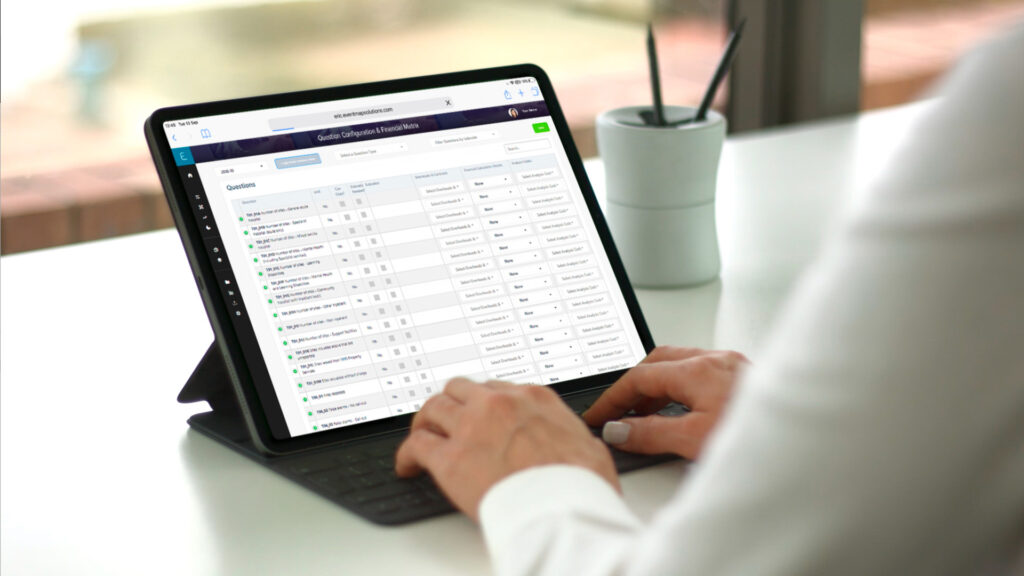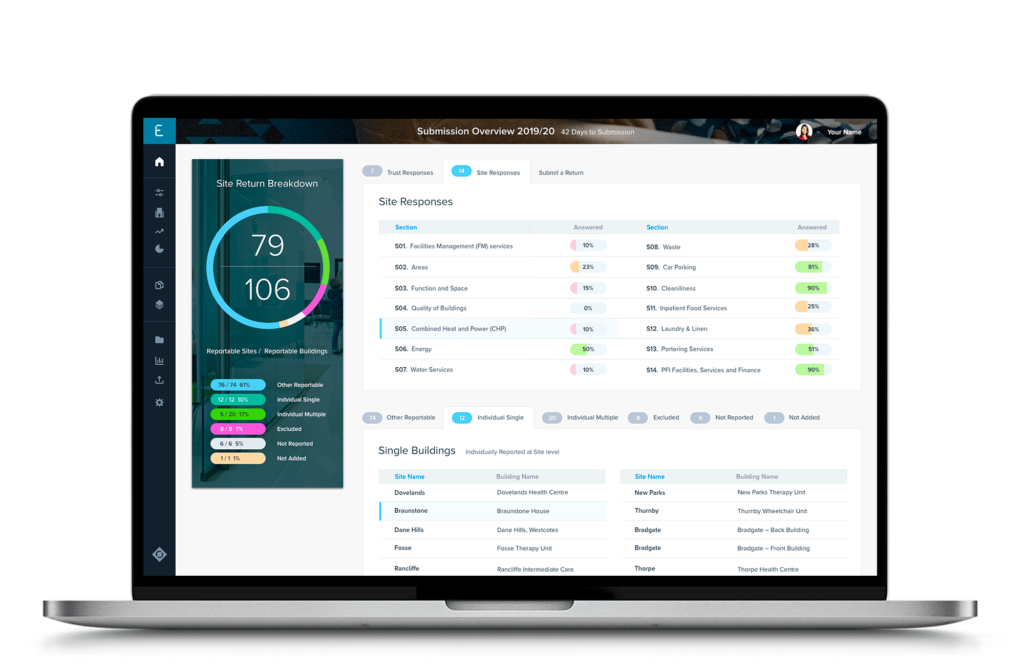Central & North West London NHS Foundation Trust Estates Returns Information Collection (ERIC) Case Study
Overview
Each year, every NHS Trust’s Estates & Facilities team has to submit their Estates Returns information to NHS England to assess expenses management across the country. This is a detailed and complex data collection and analysis exercise, called the Estates Returns Information Collection (ERIC) which is typically carried out manually. In order to complete the return accurately and on time, the individuals appointed need to accrue sufficient knowledge and experience of the process.
This reliance on human capability creates a resource continuity risk for many Trusts and also results in a significant investment of time and therefore costs to complete it each year. In addition, the questions and calculation requirements can change from year to year which increases the investment of effort and the likelihood and incidence of human error.
Typically, many Trusts find completion of the process takes around six weeks and due to its complexity some require a deadline extension or submit inaccuracies which require further manual corrections to resolve.

Client Requirement
In order to streamline the ERIC process for Central & North West London NHS Foundation Trust (CNWL), we commissioned the expertise of EventMap, a software development firm, to help automate the procedure. The brief was to create a solution that would speed up the annual return exercise and minimise the need for manual calculations as far as possible, whilst still offering some degree of tailoring to account for edge-case scenarios.
The solution had to be compliant with all ERIC requirements, flexible to accommodate changes each year and be portable and usable for other Trusts beyond CNWL. Whilst an initial transition and onboarding phase was expected, in total the automated process had to be quicker, cheaper and more reliable than the manual alternative.


Our Approach
QTS and EventMap formed a joint venture to develop the solution collaboratively. The teams consulted the Trust’s in-house staff responsible for completing the ERIC data to tailor the application to resolve the issues they faced. NHS Improvements and Digital were also consulted at a very early stage regarding integrating their EFM platform, as they shared the same vision for automating data collection. EventMap also referred closely to the overarching submission requirements throughout to ensure the design would be fully compliant.
The solution developed was tested for stability and then implemented to assist with CNWL’s 2018 ERIC submission. The onboarding and submission were successfully completed, resulting in a proven solution that we could then use to approach other Trusts keen to realise the same efficiencies and data quality standards.
East London NHS Foundation Trust (ELFT) were the first external Trust to employ the use of the ERIC Automated Solution. We collaborated with them to carry out a pilot, which ran smoothly and paved the way for our ERIC tool to assist them with all of their subsequent returns, as well as enabling live portfolio management.
The success we have experienced with both CNWL and ELFT has meant we are in a position to support a greater number of Trusts to simplify and improve their annual ERIC reporting process by using automation.
Outcome & Benefits
Overall, the ERIC Automated Solution saved CNWL and ELFT 6 weeks per year on average. It also helped to reduce inaccuracies and human errors by 95%.
In addition to the overarching resource efficiencies, the design of the solution offers Estates & Facilities teams the following additional benefits:
- Offers a means to compare year on year asset portfolio and view live asset management data throughout the year in order to inform ongoing strategic and management decision-making, rather than insight gathered once a year through the manual process
- Easy to manage business rules that can be overwritten to allow for flexibility in calculations to suit the specific configuration of your estates, whilst also allowing you to communicate the context to the centralised ERIC recipients
- Substantial reduction in administrative coordination through the use of a portal that can have multiple users submitting data from their respective departments at a convenient time
- Less project management effort required due to real-time progress updates and alerts to help ensure the ERIC data is being collected accurately, comprehensively and on time
